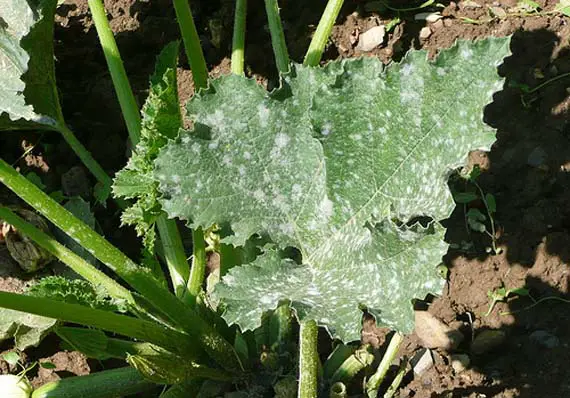
Whitish spots: First symptoms of powdery mildew
Powdery mildew, ash, dust, dust, ash, cendrada, sendrosa, sendreta, malura vella, blanqueta, etc. Depending on the place, it is known by a name, but all respond to this fungus (The killer hook) that covers the leaves with a gray or white coating similar to ash. As the disease progresses, the leaves turn yellow and dry out.
It is typical of times with mild temperatures and high humidity. Melons, cucumbers, watermelons and zucchini are affected by it in spring. Cabbages and chard suffer it in autumn. So now that we start with our flowerpot Autumn, beware of powdery mildew as soon as the temperature begins to drop and the humidity rises.
The mediterranean area it is one of the areas most prone to powdery mildew. High humidity, low temperature, poor ventilation, low light levels, stale air and even excess nitrogen favor its spread. A very high plant density in our urban garden it makes aeration difficult and can be a determining factor for the proliferation of this fungus.
For, prevent its appearance we will avoid puddles and sources of dirt, we will favor ventilation and aeration between the different plants and we can apply weekly sprays of propolis on the leaves (3 ml. per liter of water), which also acts as a fungicide against other fungi and bacteria and increases the plant’s defenses. The horsetail preparations y it they are also excellent preventatives.
Once we detect the first symptoms of the plague (appearance of whitish spots, as if it were dust) it is necessary to immediately eliminate the infected leaves and improve the aeration of the garden by pruning or eliminating some plants if there is a lot of density, as this fungus spreads quickly if the conditions are favorable. . If the powdery mildew advances, growth will slow down, the leaves will turn yellow and die.
For, fight powdery mildew we can apply spray treatments on the leaves:
- skimmed milk (half a liter of milk for 8 of water). It is very effective.
- hydrogen peroxide diluted in water (75 ml for 5 l of water).
- sulfur, either in aqueous spray or in powder given with bellows (never in flowering).
More information – Potted chard, The flowerpot, Make an ecological fungicide at home, Making an insect repellent at home

